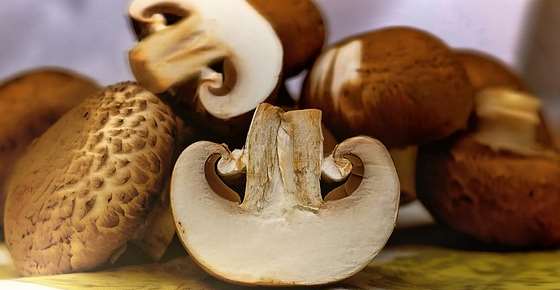Edible mushrooms come in a variety of shapes and sizes, and they’re healthy to eat. White button, portobello, and shiitake mushrooms are some of the most commonly farmed edible mushrooms. Wild edible mushrooms, such as chanterelles, porcini, and morels, can be found foraging in the woods.
Mushrooms are a fungus that is used to prepare food. Fungi of this sort have nutritional benefits, which are another reason to eat them. Of course, not all mushrooms are edible. Poisonous mushrooms come in a variety of colors and shapes, some of which resemble edible wild mushrooms.
Some mushroom types, however, have hallucinogenic properties and are not consumed. You’ll learn about several forms of edible mushrooms, both commercially produced and those that grow wild in the woods, in this article. You’ll also discover ways to store and prepare mushrooms, which will come in handy.
Precautions When Foraging for Edible Wild Mushrooms
You must be cautious when picking wild mushrooms that you only pick edible ones if you choose to pick them yourself. It’s sometimes difficult to discern if a mushroom is harmful in the wild. Edible wild mushrooms that look like poisonous may pose a serious threat if eaten. Gastrointestinal discomfort, organ failure, and even death may occur if you consume the wrong sort of wild mushroom.
If you decide to go foraging for wild mushrooms, the National Capital Poison Center recommends that you bring a mycologist with you. Mushrooms should also be avoided if they are found in polluted areas, according to a mycologist (mushroom expert). Heavy metals can build up in mushrooms, which may be harmful to your health.
Types of Edible Mushrooms (With Pictures)
Before we go any further, let’s take a quick look at some of the most popular edible mushroom species available in supermarkets. Of course, wild-growing fungus may be found growing in woods, fields, pastures, and parks, as well as all of the fungus mentioned above.
White Button Mushrooms

One of the most common types of edible mushrooms is white button mushrooms (Agaricus bisporus). The white or grey flat caps of this common mushroom, as well as its short stalks and firm flesh, are characteristic. As the mushroom develops, the young varieties of button mushrooms develop pinkish gills beneath the cap that turn dark brown.
Champignon mushrooms, table mushrooms, and common mushrooms are some of the other names for white button mushrooms. White button mushrooms are frequently used in cooking because to their mild flavor and popularity.
B-group vitamins and phosphorus are found in abundance in these little mushrooms. These brown mushrooms have immune-boosting qualities, according to studies looking into their health benefits. Certain enzymes can be stimulated by eating white button mushrooms, which may help you avoid infection.
Crimini (Cremini) Brown Mushrooms

Another kind of the Agaricus bisporus variety is Crimini brown mushrooms, which are one of the most commonly consumed fungus. Crimini mushrooms have a meatier texture and stronger earthier flavor than button mushrooms. Crimini are claimed to be more palatable than button mushrooms by many people. Italian brown mushrooms, chestnut mushrooms, Swiss brown, and Roman brown mushrooms are all other names for crimini brown mushrooms.
Crimini mushrooms have a higher nutritional value than button mushrooms. In these common brown mushrooms, for example, there is more calcium, phosphorus, and potassium. These crimini brown mushrooms are B vitamin-dense, just like button mushrooms. Crimini mushrooms may help reduce inflammation, which is one of the reasons that they are healthy to eat. According to studies, certain edible mushroom types, such as crimini, stimulate antigen cells that suppress inflammatory responses.
Portobello (Portabella) Mushrooms

Portobello mushrooms are crimini or button mushrooms that have developed for a longer period of time. The caps of Portobellos (Agaricus bisporus) are typically 6 inches (15 cm) in diameter and are broad and flat. Portobello mushrooms are generally cooked or roasted whole and packed with a stuffing, as opposed to their smaller counterparts. The meat of cooked portobello mushrooms is smoky and earthy, with a chewy texture.
The nutritional profile of this huge mushroom is comparable to that of its little cousins. The vitamin D content of portobello mushrooms has been shown to increase after grilling in certain studies. Surprisingly, if you leave the portobello in the sun for 15 minutes before cooking, it may increase its vitamin D content by more than 25%.
Shiitake Mushrooms

Shiitake (Lentinula edodes) mushrooms are regarded as some of the greatest-tasting fungus available. Shiitake mushrooms, also known as edible tree mushrooms, are indigenous to Asia. Shiitakes are tiny to medium-sized mushrooms with narrow stems. These foreign mushrooms have a distinct curled rim on their brown caps. “Black mushrooms,” “black forest mushrooms,” and “golden oak mushrooms” are all terms used to describe these edible cultivated and wild species.
Although they may be found growing on decaying trees in the wild, Shiitakes are more prevalent in Westernized nations than in Asian nations. Like other mushrooms, shiitake mushrooms contain B vitamins and minerals. Dry shiitake mushrooms are comparable to fresh ones in terms of nutrition.
In Asian nations, Shiitake mushrooms are utilized for medicinal reasons. According to scientific studies, they may also boost immunity and reduce inflammation. Antibacterial properties are found in Shiitake mushroom extracts. Fresh and dry Shiitake mushrooms
Oyster Mushrooms
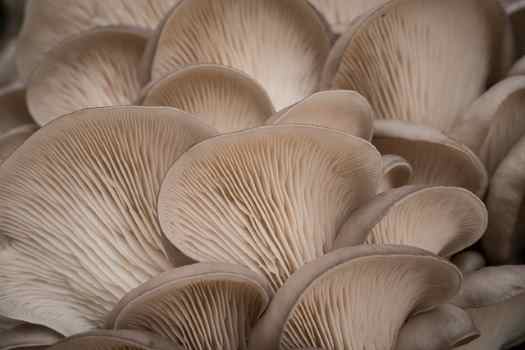
Another kind of edible tree mushroom that grows in the wild and is cultivated for culinary purposes is oyster mushrooms. Oyster mushrooms have a fan-like cap that is wavy in appearance and are commonly found in varieties. Dark brown caps to startling white caps that seem to fan out from tree trunks are among the mushrooms’ colors. Oyster mushrooms have a nutty, delicate flavor and a rich, firm texture.
The “Aspen oyster mushroom” (Pleurotus populinus), the “Indian oyster” (Pleurotus pulmonarius), and the “Tree oyster mushroom” (Pleurotus ostreatus) are all different types of oyster mushrooms. Potassium, phosphorus, and protein are all found in most oyster mushroom varieties. Oyster mushrooms, according to certain research, have significant health benefits.
Enoki Mushrooms
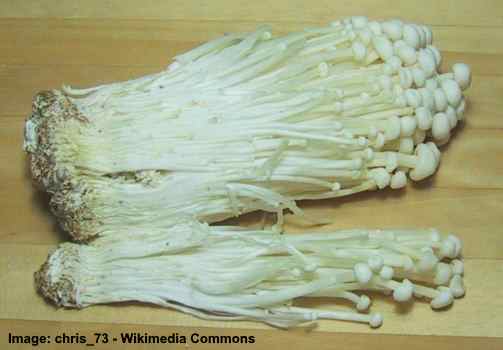
The Enoki mushrooms (Flammulina velutipes) are a kind of tiny caped white fungus that grows in clusters. These stringy or noodley mushrooms may grow up to 4 inches (12 cm) in length. One of the reasons why Asian cuisine replaces noodles with these long, slender mushrooms is that they are versatile. They suit a wide range of recipes because of their delicate, sweet flavor. Enoki mushrooms may help contribute to your daily intake of B-group vitamins, potassium, magnesium, and iron, similar to other types of edible mushrooms.
Is it beneficial to eat delicious enoki mushrooms on a regular basis? These white long stem mushrooms contain substances that may help elevate blood pressure, lower cholesterol, and enhance memory, according to studies. Extracts from F. are also being studied by researchers. Cancer therapy could be aided by the use of velutipes. Edible mushrooms, such as enoki and shiitake kinds, have been shown to help prevent obesity and improve gut health in animal studies.
Lion’s Mane
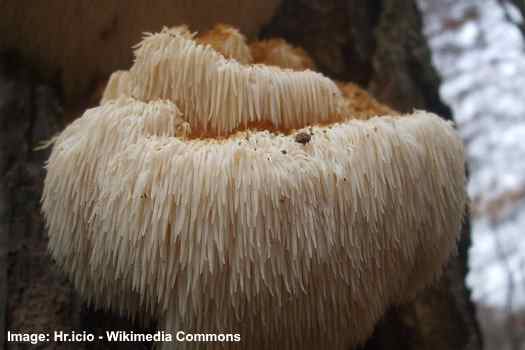
One of the more unusual types of mushrooms that are safe to eat is Lion’s Mane (Hericium erinaceus). This kind of fungus eats doesn’t resemble the others on the list of edible mushrooms in any way. The fungus looks like white pom poms and grows on trees. The thin strands that dangle freely cover the fibrous base. When prepared, lion’s mane is said to have a chewable flesh that resembles scallops or lobster.
Lion’s mane mushrooms are nutritional fungi, according to studies on their health benefits. Antibiotic, anticancer, anti-diabetic, and cardio-protective activities have been discovered in compounds found in these uncommon mushrooms. Lion’s mane has immuno-stimulating qualities, as do other mushrooms. They are difficult to locate in the wild since they grow high up on trees. Nevertheless, you may get the dried kind online or at Asian retailers, or purchase these delectable mushrooms.
Types of Wild Edible Mushrooms
Some mushrooms are difficult to cultivate and must therefore be found growing wild. You may only eat certain kinds of mushrooms.
Porcini Wild Edible Mushrooms
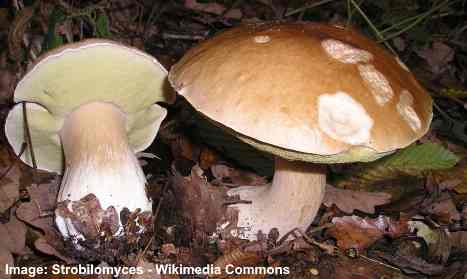
Porcini mushrooms (Boletus edulis) are delicious mushrooms that add a nutty flavor to many dishes. They are some of the best-tasting mushrooms available. Porcini mushrooms are the elite of the mushroom foraging world. Because they are a expensive wild mushroom, they are a sought-after mushroom to find. They are relatively easy to spot in the wild. Cep, California king bolete, and Penny bun are some of the other names for porcini mushrooms.
Some of the biggest wild mushrooms that may be eaten are porcini mushrooms. The cap can grow to a diameter of 12 inches (30 cm). Porcini mushrooms may grow to be up to 2 pounds (1 kg) in weight. These gigantic edible mushrooms, in addition to vitamin B12, are a good source of nutrients. Lowering blood pressure and increasing “good” cholesterol have been linked to different types of Boletus fungus. Phenolic compounds found in porcini mushrooms may also help to improve your overall health. Soups, risottos, stews, and other recipes may have a nutty, earthy flavor thanks to the use of dried porcini mushrooms.
Morel Mushrooms

Since they resemble a huge elongated walnut on a white stem, Morel (Morchella esculenta) mushrooms are regarded as one of the most unusual wild mushrooms. These exotic mushrooms have a strong meaty flavor with earthy undertones, which appeals to many individuals. Morels are costly mushrooms because they are difficult to find in the wild and cultivate. These unusual-looking mushrooms are usually only found in the spring.
Morels contain calcium, iron, potassium, magnesium, B vitamins, and vitamin D. They are also high in nutritional value. Morels have a variety of medicinal applications, according to studies. Morel mushrooms have been shown to have antioxidant, anti-inflammatory, and anticancer properties in addition to their nutritional qualities. Morels help to boost the immune system in the same way that other varieties of mushrooms do. Morels, like black truffles, are a coveted fungus that costs a lot of money.
Chanterelle Mushrooms

Wild mushrooms, including chanterelle mushrooms, are often used to prepare meals. The caps of chanterelles are bright golden and the gills run down the stems, making them easy to see. They belong to the Cantharellus genus. Mushrooms foragers can easily find these edible forest mushrooms because of their yellow color. Yet, there is a poisonous look-alike known as “Jack-o-Lanterns” that they possess. Calcium, iron, and magnesium are among the minerals found in them; vitamin D and B vitamins are also present.
Extracts from four different kinds of chanterelle have anti-inflammatory and wound-healing properties, according to medical studies. Heavy metals may be absorbed by wild mushrooms, such as chanterelles, in polluted soil. As a result, some studies recommend blanching chanterelles for 5 to 15 minutes to reduce heavy metal levels.
Maitake Mushrooms
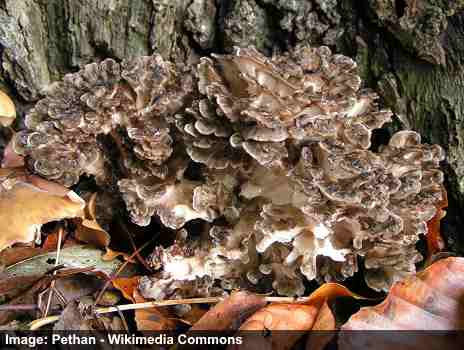
During the autumn, maitakes, a kind of wild mushroom that grows near the roots of trees, are edible. Maitakes (Grifola frondosa) are giant mushroom clusters with wavy margins that may grow to be 3 inches (7 cm) in diameter. With some weighing up to 100 pounds, this kind of edible tree mushroom can grow huge.
That’s 45 kilograms! People nickname maitakes the “king of mushrooms” as a result of their toughness fibrous texture. Younger and smaller fungus growths are a good sign that this kind of wild edible mushroom is nearby.
Dietary protein and fiber are both found in maitake mushrooms. Potassium, calcium, and magnesium are also present in this tree fungus. Extensive research has shown that maitake mushroom extracts may help prevent breast cancer, reduce cholesterol, and control type 2 diabetes.
Truffles – Edible Mushrooms that Grow in the Wild

Truffles are some of the most costly wild mushrooms available, and they’re highly desired. Truffles come in a variety of shapes and sizes, and you can consume them from the Tuberaceae family. White truffles, burgundy truffles, and a uncommon sort of fungus called the garlic truffle are among the varieties available. Underground, near the roots of trees, true truffle mushrooms may be found.
Truffles are a excellent source of protein, fiber, vitamins, and minerals and may be eaten raw or cooked. Because of their antioxidant and anti-inflammatory properties, black truffles and white truffles have health benefits. Black truffles are typically less costly than white truffles if you want to buy them to add some sophistication to your meals.
How to Store Mushrooms
Store fresh mushrooms in a paper bag at the refrigerator for the best way to preserve them. This is also why you shouldn’t put them in the crisper drawer: the paper bag will help to absorb excess moisture. In the fridge, mushrooms typically last for a week.
You should freeze or dry them if you want to keep them for a longer period. It’s preferable to chop and cook the mushrooms before freezing them. Since mushrooms are high in water, freezing them raw makes them turn mushy. Store them in a freezer bag for up to 12 months after they have cooled.
How to Clean Wild Edible Mushrooms
Cutting the stems with a small knife and cleaning away debris immediately is the best way to care for your wild edible treats when you go mushroom picking. Instead of using a plastic bag, carry the delicate mushrooms in a basket. By preventing wild mushrooms from being crushed or damaged while foraging, this will help to preserve them.
After you get home, wash away the fungus with a pastry brush and then rinse it briefly with running water. Mushrooms will absorb water if they are soaked. Any wild mushrooms you don’t recognize should be thrown away. Store wild mushrooms in the same way that store-bought cultivated mushrooms are stored.
